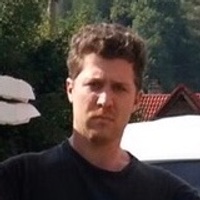On making work for yourself and the freedom of play
Prelude
Rachel Eulena Williams (b. 1991, Miami, Florida, USA) earned her B.F.A. from Cooper Union in 2013. Her work has been exhibited internationally, and she has held the SIP Fellowship at the Robert Blackburn Printmaking Workshop, New York (2019), 68 Projects, Berlin (2018), and NY Studio Factory, Brooklyn (2014). Williams works at the boundaries between painting and sculpture. Her reconfigured canvases unbind painting from the stretcher, avoiding conventional support systems and imagining a myriad of spatial contortions. She currently lives and works in Brooklyn.
Conversation
On making work for yourself and the freedom of play
Visual artist Rachel Eulena Williams on using the basics as a reset, the value of taking time away from the studio, the endlessness of process, and the importance of an eclectic creative community.
As told to Annie Bielski, 2201 words.
Tags: Art, Inspiration, Process, Production, Time management.
Are you someone who goes into the studio every day? Do you ever take long stretches away from your studio?
Having a space and going there and just doing a little something every day—it’s powerful because it’s a practice, and one day it just kind of clicks. I try to go into the studio every day. It’s important to do something, even if it’s just looking at the work or just mixing the color.
Sometimes it feels like a requirement for me to go every day, but I just recently had a time where I was away from the studio and it was actually really good for me. With quarantine, there was a month where I was like, “I don’t know if I should even leave,” so I’m getting this time away and I got to really think about my work and kind of think about the process of it. It was really helpful. There’s so many things happening in my studio, and when I kind of stepped away from it, I was able to think, “Where can I use these parts and what are they doing?” It was something I hadn’t done before because I hadn’t had that time of really thinking about the work, kind of missing it, feeling like I want to imagine being able to make it, and so I’m going to make these drawings where I pretend I’m making it and it was really great.
Also, drawing is so important for me. Sometimes, if I go into the studio, I can forget to draw. Having just focused on drawing again almost puts you back in a place where you’re thinking a lot more about the process and not so much the actions of [the work]. Drawing is the only thing that’s been constant. You can look at a piece of paper and have this understanding of it your whole life because it’s the same uniform size, so when I’m drawing, I think it’s been the place where I can be most creative and really process things.
Some of the time I will draw and get ideas from it, or I just draw to remind myself of how I want my work to look. It’s a place that I can always look at and reference for myself as the most exciting and freeing place. I’m always imagining the marks on the drawings as my sculptures, and so there’s a place where I know that if I’m making these marks, they would relate to this work I would make it in real life, so that’s a part of it as well.
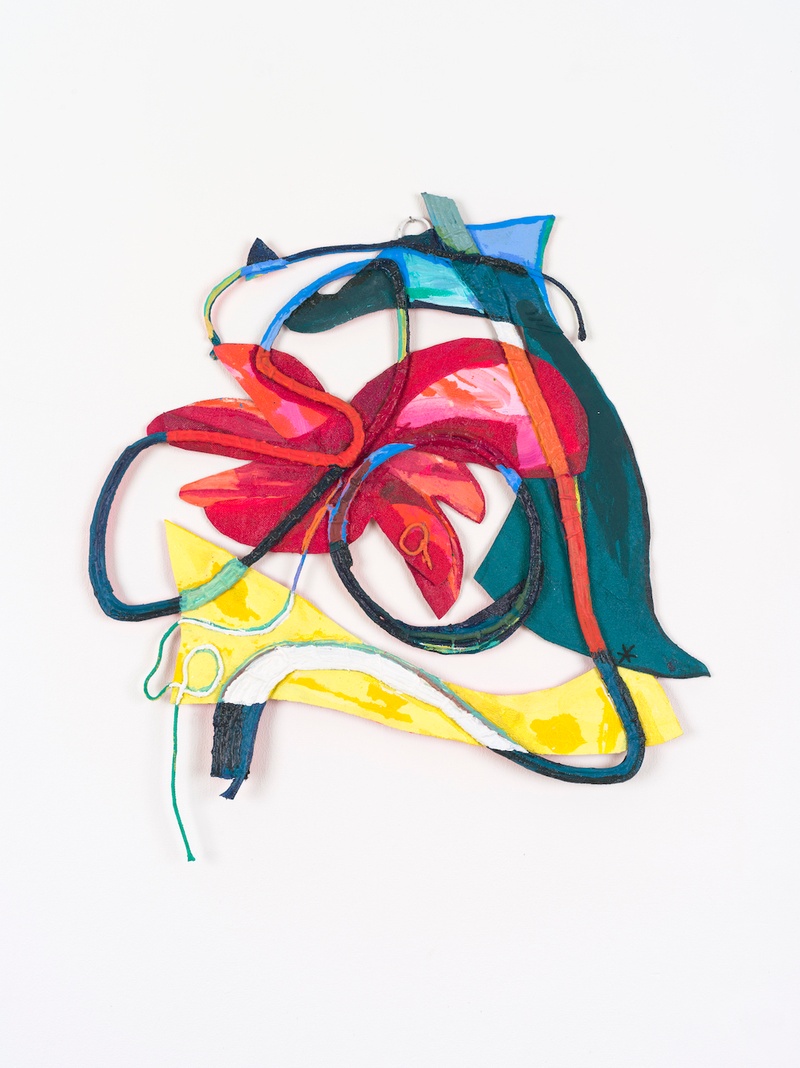
Space Flower, 2018. Acrylic on canvas and cotton rope, 33 x 30 in. Courtesy the Artist and Ceysson & Bénétière Gallery.
A compelling part of your work is its in-betweenness—a painting is also a sculpture, a line, drawing.
My work has always been just searching for this place in between all three of those things. I’m thinking of how I can translate each part into something that relates to painting, sculpture, and figuring out how I can make something that breaks the mold of how things should be read. There’s a lot of play with materials and the materials speak to line and form just as much as the color does, and I think that expanding it and pushing it outside of just having a square becomes a conversation about how things can connect. I’ve always thought of the work as something that improves the way that things connect and have a connecting meeting place.
For me, play is vital. Art is the opposite of what we have in society, the structure. When you’re playing, it gives you this freedom regardless of whatever the subject matter is. My studio is usually filled with so much information, and it’s coming from all these different places where I can’t even remember where it comes from because I’m holding onto things that I like from past pieces, or things are coming off of things, moving on to other pieces so that they can connect.
I’m working with the materials and thinking about them in a sculptural way, but at the same time, painting comes into it and creates something that is two dimensional. Your eye is going in between what is real and what is fake and there’s attraction to it, which elements of it you are more drawn to. I think that’s what’s enjoyable about looking at the work, that there is that in-between—the color that you see and what that represents, and then the texture and what that represents, and how they play not only with the space, but the wall and the whiteness.
What feeds your creativity when you’re not actively working in your studio?
I’m inspired by any type of art. I’m always interested in dance and theater and any type of way people are expressing themselves. I’m always reading different types of things and my imagination can get very lost in it. I like when I’m seeing different types of expression in real life. I feel like it’s important to check in with all the other systems of expression: handmade patterns, textiles, ritual, fashion, symbolic languages, theater, music, dance, and any type of speeches.
Speeches can be very inspirational. Especially right now. People are paying attention to so many public speakers, and there’s so much courage and so much freedom in that. When I’m watching speeches, I can get lost in it and be inspired by all the speakers’ different thoughts and what they’re trying to convince me of… I mean, you never know where you’re going to go with it, but there’s something interesting about that person having the ability to do that.
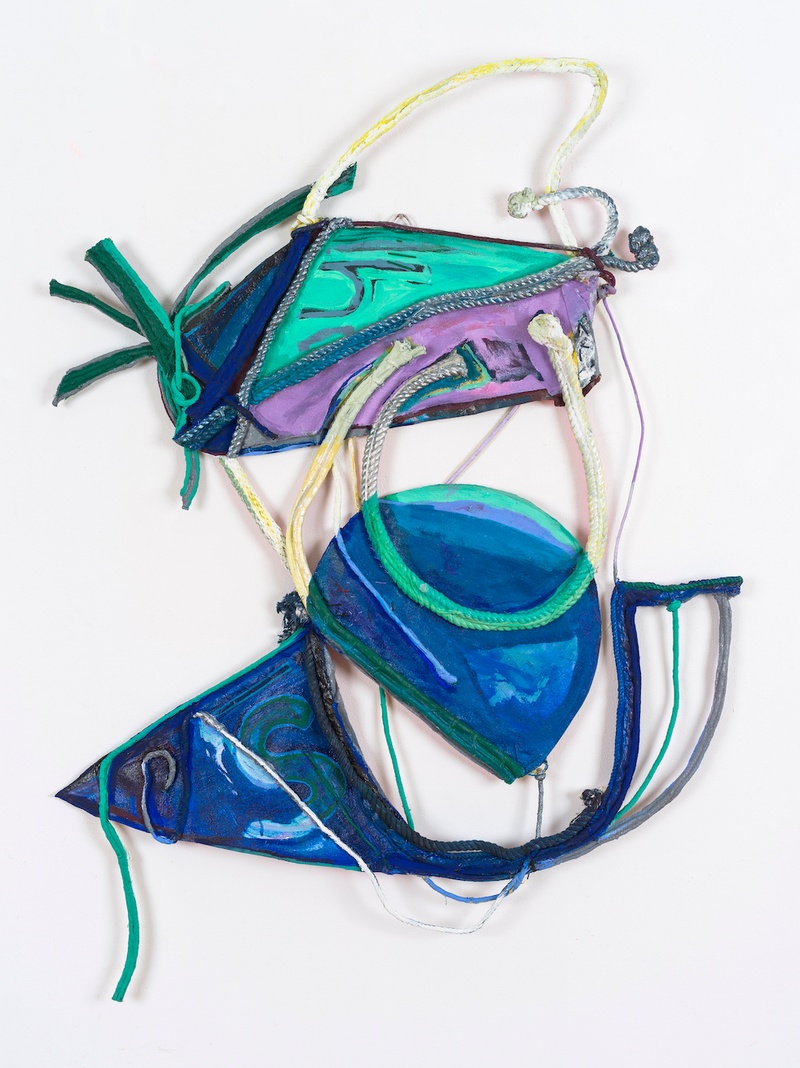
Sea of abbreviation, 2018. Acrylic on canvas and cotton rope, 40 x 60 in. Courtesy the Artist and Ceysson & Bénétière Gallery.
I’m thinking about the cadence and rhythm of speeches relating to movement and dance and some of the forms in your work. Language is another avenue where it seems like you explore play, with abstracted shapes of letters and suggestions of sounds.
Using written language in work evokes this type of sound or rhythm or speech. When you see the words in there, it becomes not only the letter, it also becomes the sound and it also becomes a line and it feels out of place, but also familiar. I like the idea that the text can be abstracted and it becomes another integration into finding some sort of thing in life that I can work into the piece. A lot of moments will be chopped up in this way; I want the work to feel like it’s coming from an intersection, so the speech and all of the sound and integration of those parts into the works are always evolving. It’s the part of my practice that I feel like I am trying to understand on my own, that personal expression and sound and just relating that part into the work. It’s such a growing part in my work and I hope to expand on that.
What do you look for in your creative community?
I look for artists that are playful and diverse, not working in a similar way. It’s interesting to have relationships with as many different styles of work and artists as you can and to understand that is important. At the same time, I do appreciate communities that are singular. I always think it’s a good thing to know as much as you can about different types of people and different types of work that you don’t know. It’s important to have a community of work where you have artists of every type of work that are also playful. When I think about my community and the people that I know, I think it’s important to embrace and understand every type of work. It’s really important to have women support groups, or painting support groups. When I think of an ideal community, I think of a school setting, not in the sense that you have teachers, but that you have as many different interests as you can in one room.
What advice would you tell younger artists or your younger self?
I saw some great advice about wanting to be an artist or thinking about being an artist, [that it’s] really only for yourself. I mean, of course you hope to be able to share it with the world, but it’s all about how much you want to make this actual thing, because the more that you want to make it and the more that you’re connected to it, regardless of what others think, I think is when people will actually start to connect to it because it has an artistic interest from you.
I’ve always kept myself going by reminding myself that it’s only about how much I want it and I’ve always thought of it as a space for myself. Everybody has different practices and people might be making work to speak to many different types of subjects, but specifically for myself, I’ve always remembered that and thought of that as the thing to keep in mind when being an artist—no one is going to like it unless you love it, [unless] you are interested and care about it more than you expect others to care about it.
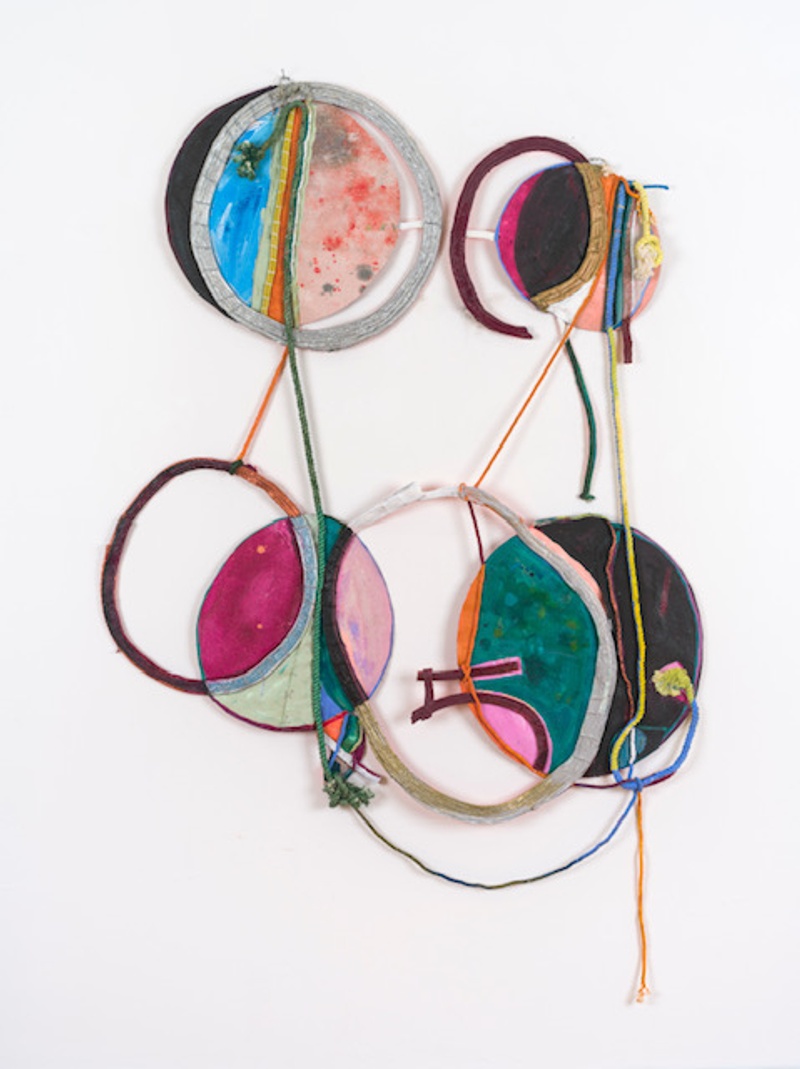
Constant Phases, 2018. Acrylic on canvas and cotton rope 67 x 54 in. Courtesy the Artist and Ceysson & Bénétière Gallery.
What’s a creative or studio habit you have to fight against?
I’m using a lot of layers in the work and sometimes I feel so attached to certain things and I feel like I have to choose those. There’s a process of choosing and I feel like sometimes I have to fight against not wanting to let go of it. It becomes about having that distance from the work. So that’s kind of why, again, I like to go and just sit and look at things and really ask where certain things are going and what’s the energy of my work—looking at it really helps just step back.
How do you decide something is done?
With my work there are so many layers and history to it and I’m constantly building off of what’s there and trying to create this new story on top of it. I think [it’s done] when there’s a balance between the energy of it. I think it’s a very abstract practice in the way that the work feels done. It usually has to have this interaction with negative space in a way that creates a mystery with how the form is shaped or even created. When I feel like it’s done, it has a certain balance between the things that I’m trying to achieve in my work in general.
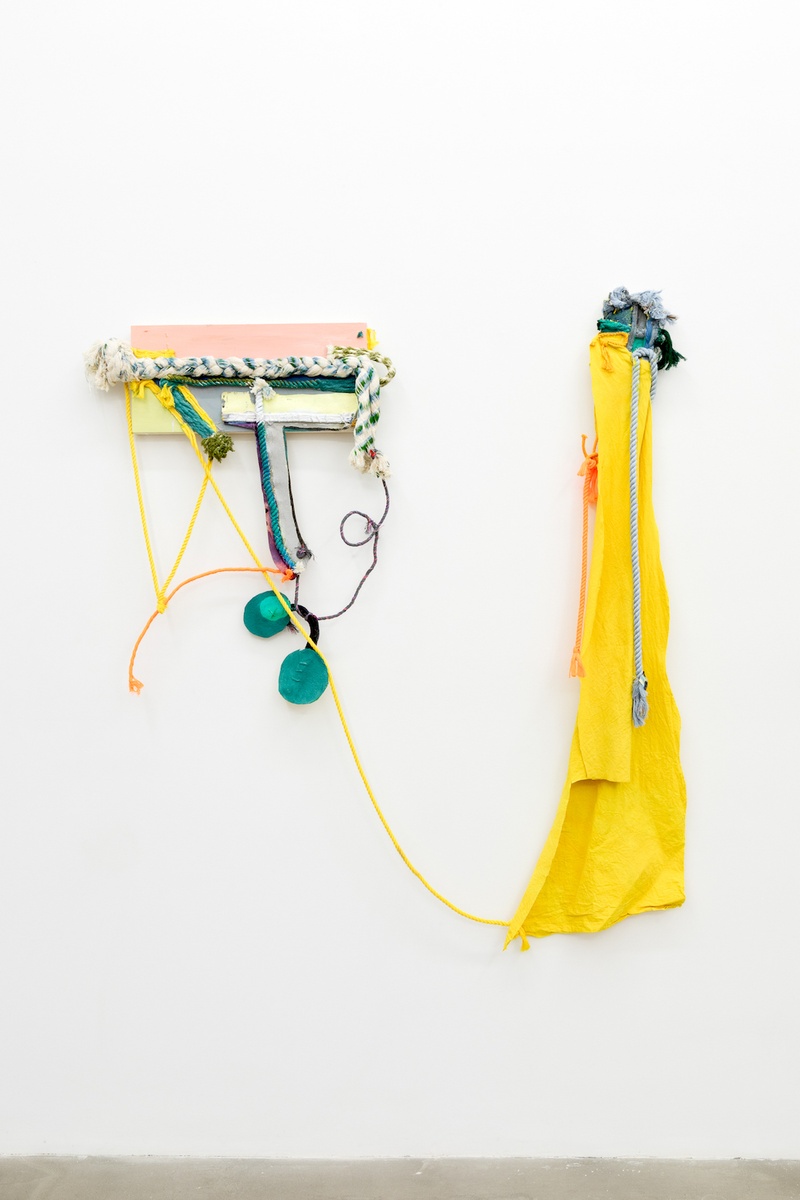
Patterns of distance together, 2019. Acrylic, dye, canvas and rope on wood panels, 58 x 52 in. Courtesy the Artist and Cooper Cole Gallery.
What questions are on your mind?
I feel like the only questions on my mind have to do with social justice. That’s always on my mind. With my work, I’m always asking myself how I can expand in a way that feels very intentional. I’m always reaching for that, so I’m always questioning how I can have this seamless entry through pieces. In my most recent work with the rope, there’s a lot of using it to its best advantage. Allowing it to hang, but also be a structure—it’s a moment where I’m asking myself these questions and figuring out how to get to the next step in executing and changing the way that I’m working. It’s a lot of process.
I’ve been asking myself, “What are the ways that I can fundamentally make the things I need and then also expand that and make more things?” I think a lot of the time with my work, it just feels like this thing I want to happen, and it’s like I’m constantly practicing a way to get there.
Rachel Eulena Williams Recommends:
Scott Treleaven and Rachel Eulena Williams’ HEY MARS exhibition.
Black-Owned Brooklyn (website)
The Best Of Soul Train - (1971 - 1979) Vol.2 (YouTube)
Octavia Butler’s Bloodchild and Other Stories
“Freeing yourself was one thing, claiming ownership of that freed self was another.” - Toni Morrison in Beloved
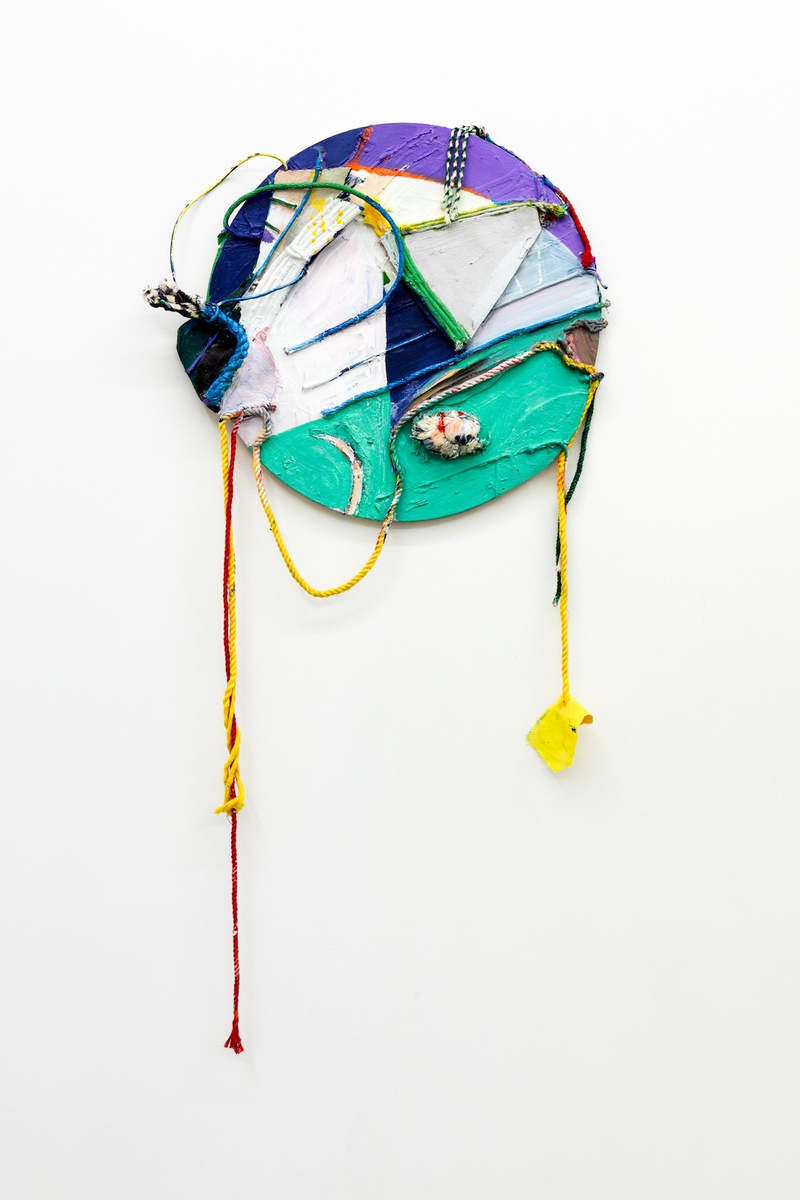
Round and round, 2020. Acrylic, rope and canvas on wood panel 24 x 24 in. Courtesy the Artist and Cooper Cole Gallery.
- Name
- Rachel Eulena Williams
- Vocation
- Visual artist
Some Things
Pagination
